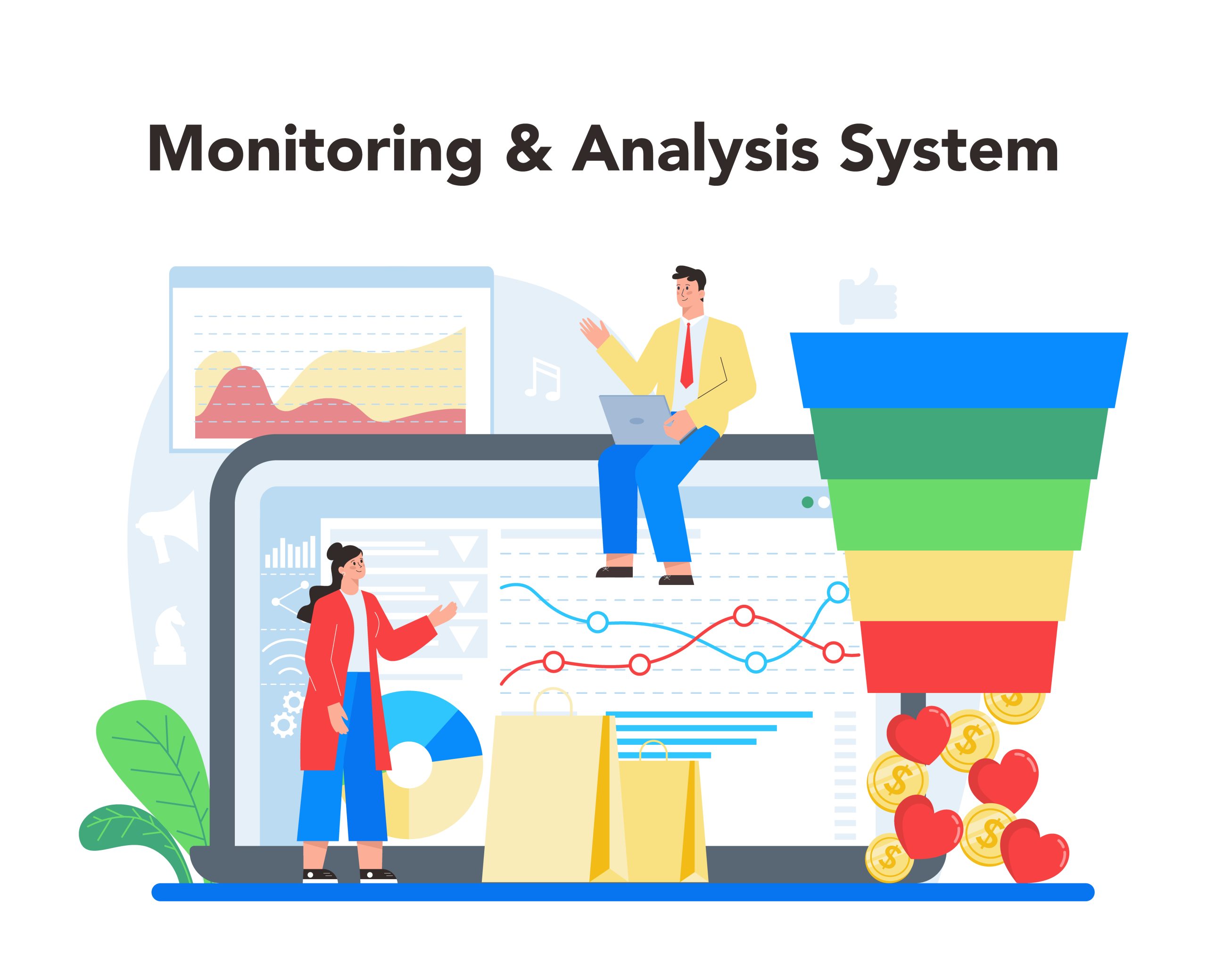
Are you looking to boost your website’s performance on Google? Understanding the power of technical SEO is key to unlocking Google’s ranking algorithm. In this article, we delve into the fascinating world of technical SEO and reveal how it can propel your website to the top of search engine results.
Technical SEO focuses on optimizing the infrastructure of your website to make it more user-friendly and search engine-friendly. It involves various aspects such as website speed, mobile-friendliness, website architecture, and structured data. By addressing these technical aspects, you can improve your website’s visibility, user experience, and ultimately, your search engine rankings.
But how exactly does technical SEO impact your website’s performance on Google? The answer lies in Google’s ranking algorithm, which takes into account hundreds of factors to determine the relevance and quality of a website. By optimizing your website’s technical aspects, you send signals to Google that your website is trustworthy, authoritative, and user-centric, increasing your chances of ranking higher in search results.
So, if you’re ready to unravel the mysteries of Google’s ranking algorithm and boost your website’s visibility, let’s dive into the world of technical SEO and discover its power.
What is technical SEO?
Technical SEO refers to the process of optimizing the technical aspects of your website to improve its visibility, user experience, and search engine rankings. It involves optimizing various elements such as website speed, mobile-friendliness, website architecture, and structured data. Technical SEO is all about ensuring that your website is easy to crawl and index by search engines, making it easier for users to find your content.
Importance of technical SEO for search engine rankings
Google’s ranking algorithm takes into account hundreds of factors when determining the relevance and quality of a website. Technical SEO is one of those factors that can significantly impact your website’s performance on search engines. By optimizing your website’s technical aspects, you send signals to Google that your website is trustworthy, authoritative, and user-centric, increasing your chances of ranking higher in search results.
Technical SEO is also crucial for improving the user experience of your website. If your website is slow to load or not mobile-friendly, users are more likely to bounce off your website, leading to a higher bounce rate and lower engagement metrics. By optimizing your website’s technical aspects, you can improve its speed, mobile-friendliness, and overall user experience, which can lead to higher engagement and better search engine rankings.
Key elements of technical SEO
Now that we understand the importance of technical SEO let’s dive into the key elements that you need to optimize to improve your website’s performance on search engines.
Optimizing website structure and navigation
The structure and navigation of your website are crucial for both user experience and search engine optimization. Search engines use your website’s structure and navigation to understand the hierarchy of your content and how it’s related. A well-structured website with clear navigation makes it easier for search engines to understand your content, resulting in better search engine rankings.
To optimize your website’s structure and navigation, you need to ensure that you have a clear hierarchy of content, with categories and subcategories that make sense. You should also use descriptive URLs that include keywords and make it easy for search engines to understand the content of each page. Finally, you should ensure that your website’s navigation is clear and easy to use, with a logical flow that guides users to the most relevant content.
Improving website speed and performance
Website speed and performance are critical factors that impact both user experience and search engine optimization. If your website is slow to load, users are more likely to bounce off your website, leading to a higher bounce rate and lower engagement metrics. Slow websites also tend to rank lower on search engines, as Google favors fast-loading websites that provide a better user experience.
To improve your website’s speed and performance, you need to optimize various elements such as image size, server response time, and code optimization. You should also use a content delivery network (CDN) to distribute your content globally, reducing latency and improving website speed. Finally, you should regularly monitor your website’s speed and performance using tools such as Google PageSpeed Insights, GTmetrix, or Pingdom to identify areas for improvement.
Mobile optimization and responsive design
With the majority of internet users accessing the web via mobile devices, mobile optimization and responsive design are crucial for both user experience and search engine optimization. Google has also introduced mobile-first indexing, which means that it’s now using the mobile version of a website for indexing and ranking.
To optimize your website for mobile devices, you need to ensure that it’s responsive, meaning that it adapts to different screen sizes and resolutions. You should also use a mobile-friendly design that’s easy to use on small screens, with large buttons and clear navigation. Finally, you should optimize your website’s images and content for mobile devices, ensuring that they load quickly and are easy to read on small screens.
On-page technical SEO factors
On-page technical SEO factors refer to the optimization of individual pages on your website to improve their search engine rankings. These factors include elements such as title tags, meta descriptions, header tags, and internal linking.
To optimize your website’s on-page technical SEO, you need to ensure that you’re using descriptive title tags and meta descriptions that include keywords and accurately describe the content of each page. You should also use header tags to structure your content and make it easier to read and understand. Finally, you should use internal linking to connect related pages on your website, making it easier for search engines to understand your content.
Optimizing website structure and navigation
Optimizing your website’s technical SEO can be a daunting task, but fortunately, there are many tools and resources available to help you. Here are some of the best technical SEO tools and resources that you can use to improve your website’s performance on search engines:
– Google Search Console: A free tool from Google that provides insights into your website’s search engine performance, including crawl errors, search queries, and more.
– Google PageSpeed Insights: A free tool from Google that analyzes your website’s speed and performance and provides suggestions for improvement.
– GTmetrix: A tool that analyzes your website’s speed and performance and provides insights into areas for improvement.
– Pingdom: A tool that monitors your website’s uptime and performance and alerts you if there are any issues.
– Moz: A suite of SEO tools that includes a technical SEO audit tool, keyword research tool, backlink analysis tool, and more.
Improving website speed and performance
Technical SEO is a critical component of search engine optimization that’s often overlooked. By optimizing your website’s technical aspects, you can improve its visibility, user experience, and ultimately, its search engine rankings. By optimizing your website’s structure and navigation, improving its speed and performance, optimizing it for mobile devices, and optimizing your on-page technical SEO factors, you can send signals to Google that your website is trustworthy, authoritative, and user-centric, increasing your chances of ranking higher in search results. With the help of the right tools and resources, you can harness the power of technical SEO and unlock Google’s ranking algorithm to propel your website to the top of search engine results.
Mobile optimization and responsive design
One of the key factors that Google considers when ranking websites is page speed. Users expect websites to load quickly, and if your website takes too long to load, it can negatively impact user experience and search engine rankings. Slow-loading websites are more likely to have a high bounce rate, meaning users leave the site without interacting with it.
To improve your website’s speed and performance, start by optimizing your images. Large, uncompressed images can significantly slow down your website. Use image compression tools to reduce the file size without compromising on image quality. Additionally, minify your CSS and JavaScript files to reduce their size and remove any unnecessary code.
Another way to boost your website’s speed is by leveraging browser caching. When a user visits your website, their browser stores certain files from your website on their device. By enabling browser caching, you can instruct the user’s browser to store these files for a specified period of time, reducing the load time for subsequent visits.
Remember, a fast-loading website not only improves user experience but also signals to Google that your website is reliable and user-friendly, increasing your chances of ranking higher in search results.
On-page technical SEO factors
With the increasing popularity of mobile devices, Google now prioritizes mobile-friendly websites in its search results. This means that if your website is not optimized for mobile devices, you could be missing out on valuable traffic. Mobile optimization involves ensuring that your website is responsive, meaning it adapts to different screen sizes and resolutions.
To make your website mobile-friendly, start by implementing a responsive design. This means that your website’s layout and content should automatically adjust to fit the screen size of the device it is being viewed on. Additionally, ensure that your website’s fonts are legible on smaller screens and that buttons and links are easy to tap.
Another important aspect of mobile optimization is page speed. Mobile users often have slower internet connections compared to desktop users, so it’s crucial to optimize your website for speed on mobile devices. Minimize the use of large images and heavy scripts, and prioritize speed by using a content delivery network (CDN) to ensure fast loading times across different locations.
By making your website mobile-friendly, you not only improve user experience but also increase your chances of ranking higher in mobile search results, which can be a significant source of traffic.
Technical SEO tools and resources
In addition to website speed and mobile optimization, there are several on-page technical SEO factors that you should consider when optimizing your website. These factors play a crucial role in determining your website’s relevance and quality in the eyes of Google’s ranking algorithm.
One important on-page factor is the use of meta tags. Meta tags provide information about your web page to search engines and website visitors. The title tag, for example, appears as the clickable headline in search engine results and should accurately describe the content of your page. The meta description, on the other hand, is a brief summary of your page’s content that appears below the title tag in search results.
Another on-page factor to consider is the use of header tags. Header tags, such as H1, H2, and H3, help search engines understand the structure and hierarchy of your content. Use these tags to organize your content and highlight the most important headings and subheadings.
Additionally, optimizing your URLs can have a significant impact on your website’s visibility. Include relevant keywords in your URLs and use hyphens to separate words for better readability. Avoid using long, complex URLs that are difficult for users and search engines to understand.
By paying attention to these on-page technical SEO factors, you can ensure that your website is optimized for search engines and provides a positive user experience.
Conclusion: Harnessing the power of technical SEO for better search engine rankings
Optimizing your website’s technical aspects can seem overwhelming, but fortunately, there are numerous tools and resources available to help you along the way. These tools can provide valuable insights into your website’s performance and suggest optimizations to improve your search engine rankings.
One popular tool is Google’s PageSpeed Insights. This tool analyzes your website’s speed and provides suggestions for improvement. It also provides a mobile-friendliness score and highlights any issues that may impact your website’s performance on mobile devices.
Another useful tool is Google Search Console. This free tool allows you to monitor your website’s performance in Google search results. It provides data on search impressions, clicks, and average position, allowing you to identify areas for improvement and track the impact of your SEO efforts.
In addition to these tools, there are numerous online resources and communities dedicated to technical SEO. Websites such as Moz, Search Engine Journal, and SEMrush offer valuable insights, guides, and industry updates to help you stay on top of the latest SEO trends and best practices.
By leveraging these tools and resources, you can stay informed about technical SEO best practices and continuously optimize your website for better search engine rankings.




